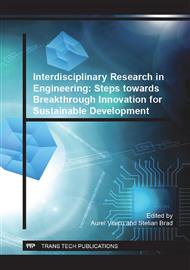p.251
p.259
p.269
p.277
p.285
p.293
p.301
p.309
p.317
Research on How Lens Position of the Optical System is Influencing the Mechanical Characteristics of the Metallic Parts Made by Selective Laser Melting Equipment
Abstract:
The Selective Laser Melting (SLM) is one of the most important Additive Manufacturing (AM) technologies that have been developed in the last few years, with applications in different domains, starting with the industrial engineering and ending with biomedical industry, as well. According to the type of the application (industrial or medical), the challenges and requirements related to this modern technology are different, regarding the mechanical properties of the manufactured parts. The article presents the theoretical and experimental research that was made by the authors in order to improve the mechanical characteristics of the metallic parts manufactured by using the Selective Laser Melting (SLM) technology. Finite element analysis method has been successfully used in order to study the connection between the density of the material and the fracture strength of several samples that were manufactured from Stainless Steel 316L material, at the Technical University of Cluj-Napoca, using the MCP Realizer II SLM 250 equipment. The experimental results that have been obtained by the authors have finally proved that there is a very strong connection between the lens position of the optical system and the resulted porosity of the parts manufactured by using the SLM machine.
Info:
Periodical:
Pages:
285-292
Citation:
Online since:
June 2013
Authors:
Permissions:
Share:
Citation:


